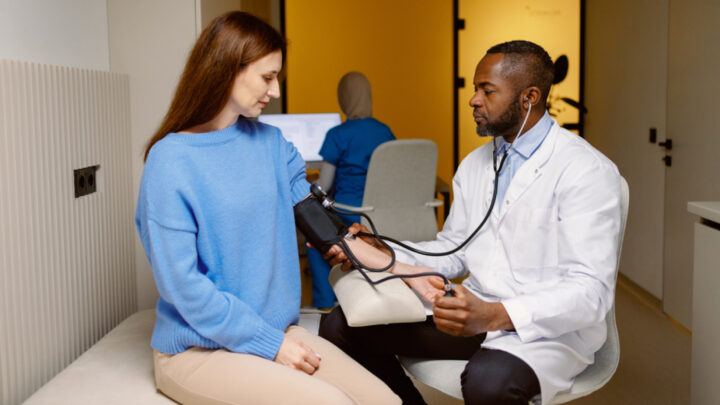
A study in the Journal of General Internal Medicine found that a doctor following medical guidelines for preventive, chronic, and acute disease care in patients would need about 27 hours per day.
Sermo doctors agree with this study. In a recent poll, 84% of global physicians said they don’t have enough hours in the day to adequately treat and support their patients. And 99% said that the cumulative burden of all the physicians’ guideline recommendations combined can feel overwhelming, or even absurd. 77% find it hard to decide which medical guidelines to prioritize from patient to patient.
98% feel that not having enough hours in the day contributes to physician burnout. And 96% believe that guidelines should be held to the same standard as new drugs—before they are implemented, there should be evidence that they are helpful.
The New York Times recently reported on this topic, as well: “The intent is admirable: Give doctors guidelines so they can be sure to cover what needs to be discussed with patients and help select options. Let’s talk about your diet and any problems you might have sleeping. Are you getting enough exercise? If not, here is some advice. You are due for colon cancer screening. Do you prefer a colonoscopy or a fecal test? Here are the pros and cons of each.
But there is a problem. There are just not enough hours in a workday to discuss and act on all the guidelines…
That could require nearly 27 hours per day, a team of doctors wrote in a study last year for the Journal of General Internal Medicine.
No one could actually do that, so imagine a doctor shrugged off the chronic and acute care, as well as administrative work, and merely followed the preventive care checklist recommended by the U.S. Preventive Services Task Force, an independent panel of health experts. That would be 8.6 of the doctor’s hours each day, according to a study in the American Journal of Public Health…
Guidelines have become ‘a constant frustration,’ said Dr. Minna Johansson, a general practitioner in Uddevalla, Sweden, who also directs the Global Center for Sustainable Healthcare at the University of Gothenburg. She worked with doctors in other countries on an analysis of the issue that was published last month in BMJ. ‘A lot of guidelines may seem reasonable when considered in isolation,’ Dr. Johansson said. ‘But the cumulative burden of all guideline recommendations combined is absurd.’”
Here is more of what Sermo physicians have to say on this topic—their medical perspectives and opinions—in their own words:
“So many compensation packages are based on # of patients/ # of visits, so do the math. It is not possible for physicians to make enough money to pay back their educational debt, rent, raise a family, afford insurance etc, and spend that kind of time with each patient, reviewing every guideline. We don’t get paid by the time we spend ( like lawyers.)” —OBGYN, U.S.
“Yep…when I see these new guidelines put out there … I usually just chuckle a bit. I saw this long ago – that the overall time burden on Primary Care docs was becoming ridiculous and simply stupid. We need to treat the Patient – not the guidelines and what the government/insurance wants…” —Family Medicine, U.S.
“I hate guidelines and I’m not an MPM (Procedural Modified Physician)…” —Orthopedic Surgery, Italy
“During the course of my career as a pediatrician, the powers that be have ADDED to my “standard of care” list of things to do: M-CHAT screening for autism, ASQ3 formal developmental screening, PHQ-9 depression screening for adolescents and pre-adolescents, topical fluoride for dental health, and Edinburgh screen for post-partum depression of the MOTHERS of my patients, just to name a few. Many also advocate for sexual orientation and gender dysphoria exploration, school and behavioral difficulties, and many other discussion-type items. Add to that the discussions on whether vaccines are really necessary, why can’t I get Ivermectin for my child’s COVID, etc. The reimbursement has not increased nor has the time for each well child appointment.” —Pediatrics, U.S.
“Interesting Article, and good take on a daily dilemma for many doctors in our medical practices. Thank you for bringing it up and for sharing it with our Sermo Community.” —Pediatrics, U.S.
“The electronic medical record demands that the doctor check the boxes showing that the guidelines have been consulted and followed unless the doctor documents why not. So the boxes are checked even when the substance of the boxes is ignored. “I am compliant!” Garbage in, garbage out.” —Internal Medicine, U.S.
“In my opinion, most of the time in the consultation is spent on educating the patient, who largely forgets or does not remember them, we should make a change and have someone give them these educational guides by telemedicine and thus we dedicate more time to the clinical history, clinical examination and medical treatment.” —Pediatrics, Venezuela
“Medical care in a public hospital is limited by the number of appointments scheduled, lasting 15 minutes each, very little time for quality care and implementing the recommended guidelines for each patient.” —G.P., Mexico
“The profession demands high levels of continuous training . However, the 48 hours a week (actual working day for the doctor) are dedicated fundamentally and almost exclusively to health care and to a lesser extent to tasks of clinical management, teaching and information. But this only represents a part of the functions entrusted to the doctor. However, the additional effort that doctors make is not recognized in any way.” —Family Medicine, Cuba
“The Medical Workday at the hospital level must comply with guidelines, based on research and results of studies carried out with scientific evidence. It should always be to improve and make care easier for patients. We must take into account that many studies carried out on patients cannot be carried out to reach a diagnosis due to cost and this makes it difficult for the doctor to comply with the guidelines.” —G.P., Venezuela
Everyday thousands of Sermo member physicians from diverse backgrounds and experiences exchange knowledge with each other. Sermo is the original medical social network that empowers today’s physicians. Over 1 million fully verified physicians across more than 150 countries come to our platform to talk with peers, participate in paid medical studies, solve challenging patient cases, contribute to the world’s largest database of drug ratings – and enjoy a few laughs along the way.
Interested in more? Check back any time and follow us on Facebook, Twitter, and LinkedIn for the latest and greatest in physician insights.
Are you a physician or healthcare practitioner?
Explore the many benefits of Sermo’s medical community and join in on all the exciting conversations when you sign up for free today.














